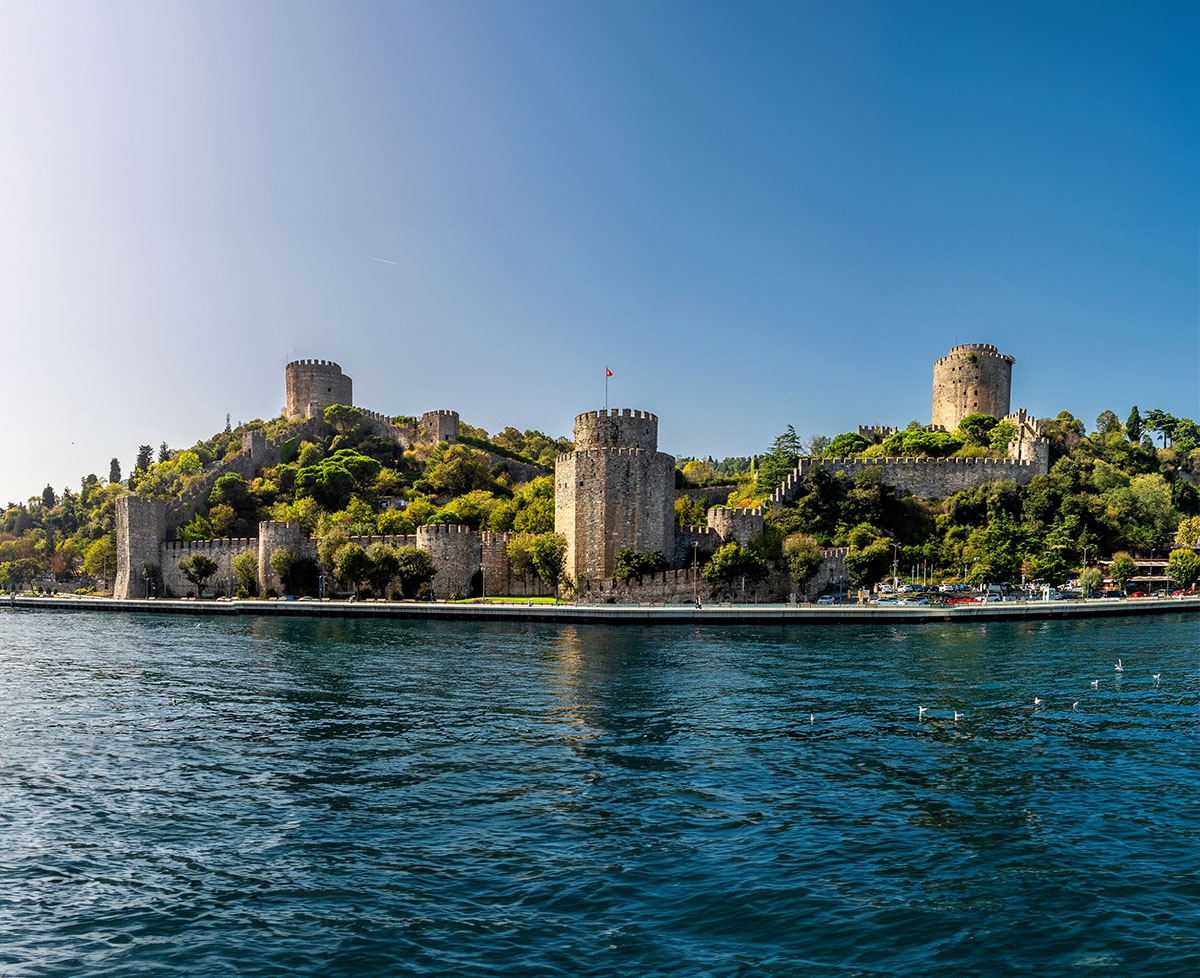Rumeli Fortress
The Bridge to Conquest
 Rumeli Fortress, one of the stunning beauties of Istanbul, adorns the Bosphorus waters with all its splendor.
Rumeli Fortress, one of the stunning beauties of Istanbul, adorns the Bosphorus waters with all its splendor.
The fortress, which is known to have been built by Fatih Sultan Mehmet to take precautions against attacks from the Black Sea before conquering Istanbul, covers a large area of 30 acres. The fortress, which was completed within 90 days, has one of the largest castle towers in the world with its three giant towers.
While the fortress has been called by different names from the past to the present, it is listed as "Kulle-i Cedide" in the Fatih Sultan Mehmet Foundation Deed. In Neşri Tarihi, it is called "Yenice Hisar", and in Kemalpasazade and Aşıkpaşazade Histories, it is called "Boğazkesen Hisarı".
Rumeli Fortress has survived despite the natural disasters that have occurred over time. Although it was seriously damaged in the Great Istanbul Earthquake of 1509, it was quickly repaired. However, the wooden sections were damaged as a result of the fire that broke out in 1746. The fortress, which was restored again during the reign of Selim III, was filled with small wooden houses inside the castle after the wooden domes covering its towers were demolished.
In 1953, at the instruction of President Celal Bayar, three Turkish female architects, Cahide Tamer Aksel, Selma Emler and Mualla Eyüboglu Anhegger, started the restoration works of Rumeli Fortress.The wooden houses inside the fortress were expropriated and demolished and restored to their original state.
Today, many artifacts from cannonballs to cannons in the garden and a piece of the chain that is said to have closed the Golden Horn are presented to visitors at Rumeli Fortress, which is used as a museum. Rumeli Fortress is not only a structure that carries the traces of history; it is also a point that offers a unique view of Istanbul.